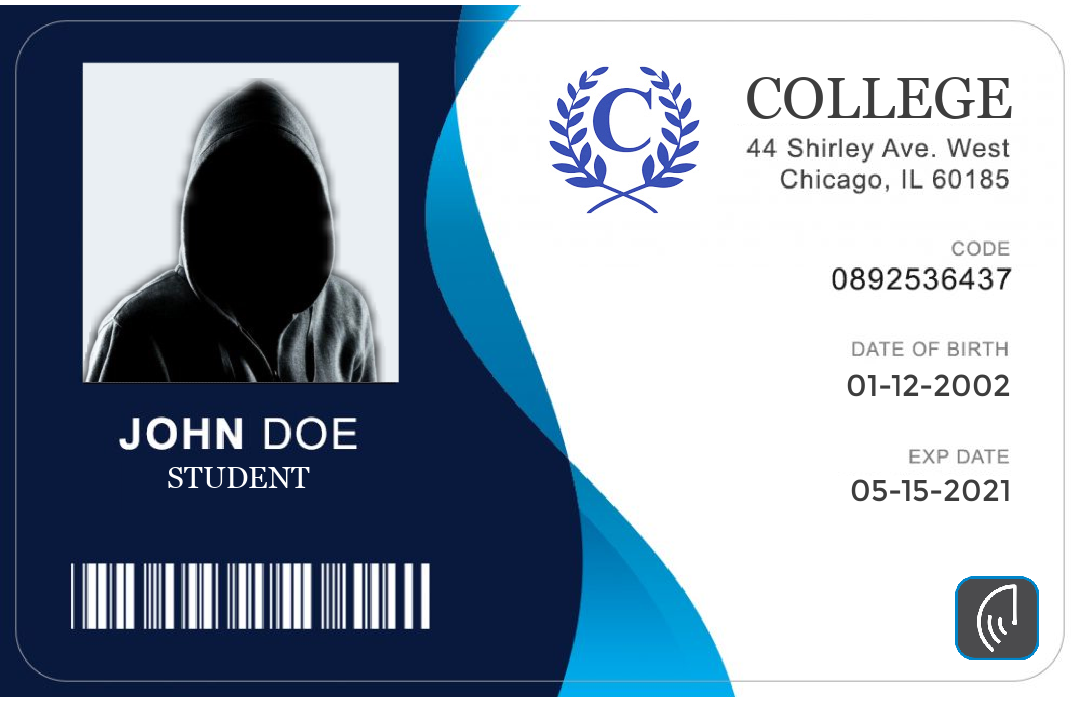
by Brian Thompson | Sep 1, 2020 | General, Identity Theft
With colleges and universities beginning the new school year, online students are targeted in ID Theft and Fraud schemes! Online Fraud Schemes that we did not have to worry about when I was in school. I had the time of my life and made many lifetime friends when I attended the University of Dayton! Student life was simple, no laptops, no smartphones, no social media, socializing at the library, and the music was fantastic.
But what is happening now?
 Now more than ever, Laptops, Smartphones, Social Media, and advanced schemes have increased the risk for students. Risks that now are more prevalent due to the majority of students studying online remotely, due to the COVID-19 pandemic, creating higher risk. And this May 27, 2020, Federal Trade Commission (FTC) article titled COVID-19 scams targeting college students confirms it.
Now more than ever, Laptops, Smartphones, Social Media, and advanced schemes have increased the risk for students. Risks that now are more prevalent due to the majority of students studying online remotely, due to the COVID-19 pandemic, creating higher risk. And this May 27, 2020, Federal Trade Commission (FTC) article titled COVID-19 scams targeting college students confirms it.
With a significant increase in phony LinkedIn, Facebook, and other social media friend requests placing many students at risk – as this August 12, 2020 article titled COVID-19 is shattering cyberattack records highlights – the daily inundation of misinformation has given cybercriminals an endless resource of information to implement their attacks.
But college students are not the only targets
California had the most educational data breaches accounting for 157 of the 1,328 breaches (11.8 percent).
The worst-hit states include:
- New York with 89
- Texas with 79
- Illinois and Ohio each with 60
- Florida with 58
Overall, Colleges account for 74% of education data breaches.
Please see this July 14, 2020 article titled FBI warning-cybercrimes are up and school districts could be the target, for more information.
What students and parents to do mitigate risk?
Students and Parents can mitigate exposure to cyber scams and identity theft in the following ways.
- The COVID-19 pandemic has new email phishing attacks that try to trick parents working and students studying remotely into giving away credentials for access to their employers’ and college/university networks. You need to stay vigilant and be careful with every email.
- A new voice phishing scam uses a combination of one-on-one phone calls and custom phishing sites to steal VPN credentials from again – both parents and students.
- Limit what you share online, use, and regularly change strong passwords on devices.
- Know your rights. “Student rights” under the Federal Educational Rights and Privacy Act (FERPA) protects the privacy of student records.
Online students are being targeted by ID theft criminals now more than ever. As these criminals continue to use student information to obtain employment, rent an apartment, open a utility, cell phone, bank account, or to access government benefits be ever aware of new and emerging scams.
by Mark Pribish
VP and ID Theft Practice Leader
Related COVID-19 Fraud articles:
Fraud in the Midst of COVID-19
Telehealth Creates Cyber Risks
Coronavirus Fear and Anxiety Drives Phishing Scams
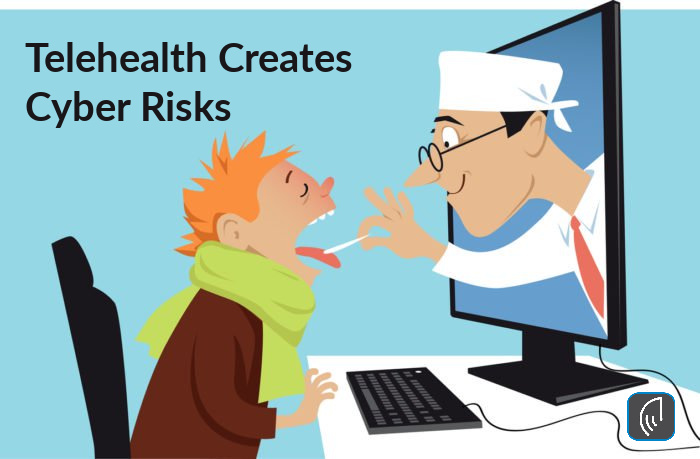
by Brian Thompson | Aug 6, 2020 | General, Identity Theft
Telehealth creates new cyber and medical id theft risks.
In follow up to the July 2, 2020 article titled “MEDICAL-ID THEFT RISKS INCREASE”. That article we said” we need to be more vigilant about cyber scams, phishing scams, hackers, and insider threats. The threats that are targeting our online presence – including telehealth services.
Based on the reader response and an article by HealthIT Security, Telehealth is the New Normal, But so is Online Fraud, we thought it appropriate to continue the discussion…
The COVID-19 pandemic has increased consumer risks through cyber scams and medical identity theft.
 Telehealth growth has exploded.
Telehealth growth has exploded.
HealthITSecurity, states “the U.S. telehealth market was estimated at ~$3 billion with 11% of consumers using telehealth in 2019. Fast forward to pandemic-plagued 2020, the telehealth market is poised to grow to $250 billion with 46% of consumers now using telehealth, according to McKinsey & Company.”
“Unfortunately,” and according to HealthITSecurity, “these benefits are being offset by a variety of fraud schemes where healthcare fraud in the US is approaching $300 billion annually and while the Department of Health & Human Services and the Centers for Medicare & Medicaid Services eased their telehealth requirements to serve more patients during the pandemic, there could be an inadvertent wave of billing fraud and risk patient safety.”
The fact is, the COVID-19 pandemic has cyber scammers, phishing scammers, hackers, and even the insider threat targeting healthcare professionals and consumers.
Examples of fraud scams, phishing scams, hacking, and insider threats include:
- Fraud scams including fake or fraudulent COVID-19 cures through fraudulent phone calls, fake social media content, and door-to-door sales.
- Phishing and Vishing Scams including fake emails, texts and phone calls to get you to share personal information like account numbers, Social Security numbers, or your login IDs and passwords.
- Hacking / Malware where hackers use malicious software such as viruses, worms, Trojan viruses, spyware, adware, and ransomware.
- Insider Threats including current and former employees. The careless worker, the disgruntled employee, the malicious insider, and the outside contractor or vendor can all be threats.
While Telehealth is an emerging opportunity with great potential, Telehealth Creates Cyber Risks that could lead to identity theft.
According to this April 13, 2020, Association of Certified Fraud Examiners (ACFE) blog, “as Telehealth services proliferate, telehealth fraud schemes will continue to evolve (please see here).
Consumers need to be aware that theft of or using your personal information can also originate with Telehealth services. (e.g., name, Social Security number, Medicare number, etc.)
Consumers can also reduce their risk of medical identity theft by safeguarding their health insurance cards, regularly reviewing credit reports, medical benefit explanations, medical bills, and prescription bills.
by Mark Pribish
Other Articles around COVID-19 and fraud:

by Brian Thompson | Jul 2, 2020 | Uncategorized
Since people started working from home due to the COVID-19 crisis, risk has had gone up! Medical ID Theft, financial and non-financial identity theft, fraud and scams have significantly increased.
Keyword phrases such as cybercrime, cyber thieves, data breach, digital spying, identity theft, personal privacy, phishing, and reputational risk have been reported and written about relating to both individuals and businesses more than ever.
As if it was not enough to constantly fight hackers and scammers at the office, most American workers are now fighting the same hackers, scammers and ID theft criminals remotely, from our “private” homes.
Understanding that many people live their lives online through social media, dating websites, reading the news, and the use of smartphones – the COVID-19 crisis has increased access points to the American consumer and worker more than ever.
One example of a new access point for many consumers is Telehealth.
According to the Centers for Disease Control (CDC) June 10, 2020 update titled Using Telehealth to Expand Access to Essential Health Services during the COVID-19 Pandemic (please see here), “Telehealth services help provide necessary care to patients while minimizing the transmission risk of the COVID-19 virus to healthcare personnel (HCP) and patients” and “while telehealth technology and its use are not new, widespread adoption among Healthcare Providers and patients beyond simple telephone calls has been relatively slow.”
The CDC stated that recent policy changes during the COVID-19 pandemic have reduced barriers to telehealth access and have promoted the use of telehealth as a way to deliver acute, chronic, primary and specialty care that can help improve patient health outcomes.
However, and while Telehealth is a timely, valuable and useful tool, this June 22, 2020 article titled Security Experts Warn Of Elevated Threat Of Medical ID Theft During Coronavirus Pandemic (please see here) reported that “the coronavirus pandemic presents a greater threat for medical identity theft as patients interact with the health care system.”
One security expert, Randy Pargman, a former senior computer scientist with the Federal Bureau of Investigation (FBI) said that “companies across the board are more susceptible to theft of personal information during this pandemic because the attackers know they can take advantage of this situation.”
Pargman also said, “patient files are rife with personal data ranging from social security numbers to insurance information.”
Whether it is a cybercriminal hacking medical files or the insider threat stealing medical files, I am certain that Telehealth services have just as many vulnerabilities as the many healthcare systems, hospitals, and medical groups that have already experienced data breach events.
As we continue to work from home, we need to be more vigilant than ever about the cyber scams, phishing scams, hackers, and insider threats that are targeting our online presence – including Telehealth services.
by Mark Pribish
Learn more: Health Care Schemes & COVID-19 Pandemic
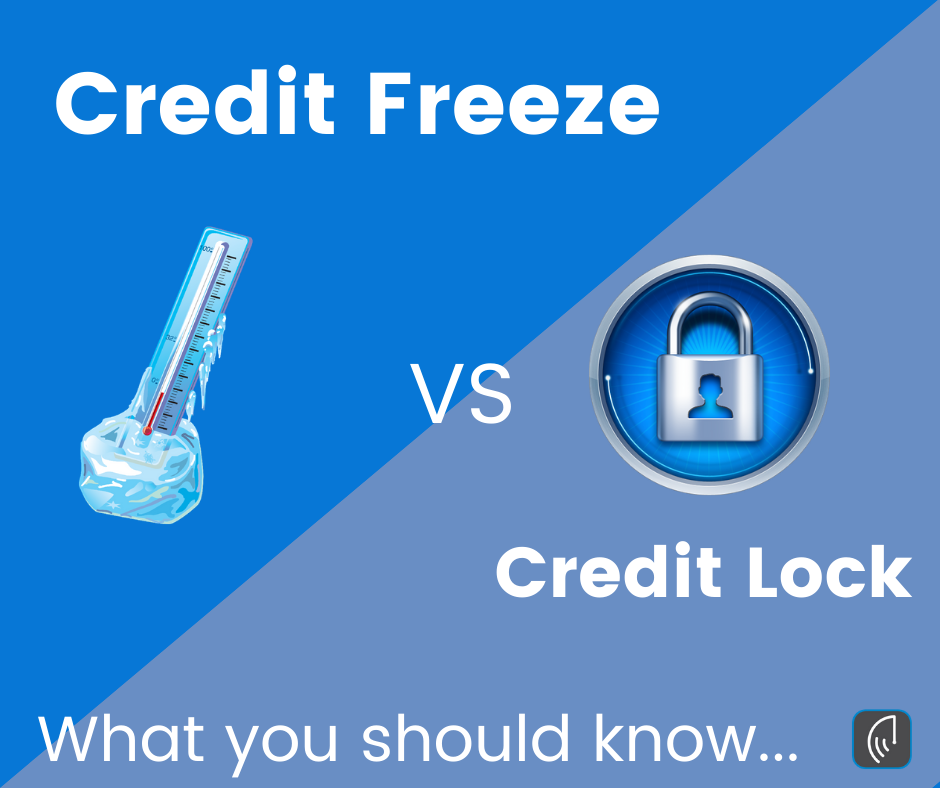
by Brian Thompson | May 29, 2020 | Breach, Identity Theft
Credit Freezes vs Credit locks, what you should know is that they are not exactly the same thing.
Credit freezes are now free, but credit bureaus are pushing you to lock your credit instead.
Why you want to know the difference
Consumers, in general, are more worried about identity theft than ever before and they should be. Identity theft is one of the fastest-growing crimes in the past years and will see a significant spike this year. According to a May 22, 2020 ComputerWeekly.com article titled Covid-19 will leave organizations exposed to higher cyber risks (please see here https://www.computerweekly.com/news/252483503/Covid-19-will-leave-organisations-exposed-to-higher-cyber-risks), “hacking attacks and phishing emails could become the new norm.”
The fact is the risk of a data breach event is now higher than ever based on the “increase in phishing email attacks, malicious keylogger attacks and the distribution of password-stealing software.” This means that consumers are more exposed now more than ever and might not know for months or even years that their Personally Identifiable Information (PII) was stolen.
Since the COVID-19 crisis began, state and federal law enforcement has reported on numerous cybersecurity attacks and phishing scams including:
- Sophisticated COVID-19 related phishing attacks that use PDF attachments to bypass software security defenses
- Fake shipping emails pretending to be from FedEx and UPS to trick customers into downloading malware
- Phony LinkedIn “connect” and Facebook “friend” requests to trick users into downloading malware
- Fraudulent small business lending emails targeting small business owners including small law firms
- New and innovative “vishing” phone scams impersonating government organizations and charities to solicit donations
With the increase in cyber scams, breaches, and ID theft during the current COVID-19 crisis, consumers might consider placing a credit freeze on their credit report.
However, be careful as Consumer Reports Magazine states (please see here https://www.consumerreports.org/credit-protection-monitoring/why-a-free-credit-freeze-is-better-than-a-credit-lock/) that “even though credit freezes are now free, credit bureaus are pushing consumers to lock their credit instead.”
What is the difference?
A credit lock and a credit freeze are similar forms of protecting your credit reports from being accessed by identity fraudsters. The two are often used interchangeably but they are different.
 Freezing your credit with each of the three credit bureaus, Equifax, Transunion, and Experian restrict access to your credit for anyone attempting to access it. Access is granted only when you unfreeze your credit. Freezing and unfreezing your credit is free, by law, and requires you to use a password-protected account or pin number.
Freezing your credit with each of the three credit bureaus, Equifax, Transunion, and Experian restrict access to your credit for anyone attempting to access it. Access is granted only when you unfreeze your credit. Freezing and unfreezing your credit is free, by law, and requires you to use a password-protected account or pin number.
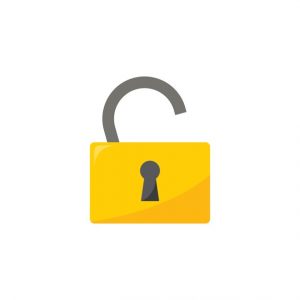 Locking your credit accomplishes the same restriction to your credit. But unlocking your credit is very easy and can be done immediately at any time. Unlocking can be done on your computer or your phone. This is beneficial because it is far easier to lock and unlock than it is to freeze and unfreeze. You will pay for the convenience of this service.
Locking your credit accomplishes the same restriction to your credit. But unlocking your credit is very easy and can be done immediately at any time. Unlocking can be done on your computer or your phone. This is beneficial because it is far easier to lock and unlock than it is to freeze and unfreeze. You will pay for the convenience of this service.
Both Freezing and Locking your credit prevent others from accessing your credit information, eliminating the possibility that a fraudster could open a new credit account in your name.
CREDIT FREEZES vs CREDIT LOCKS…The choice is yours but both options are worth considering to protect you and your family members.
Looking for more protection? Here are 14 features of Identity Theft Protection Monitoring and the Most Important Feature!
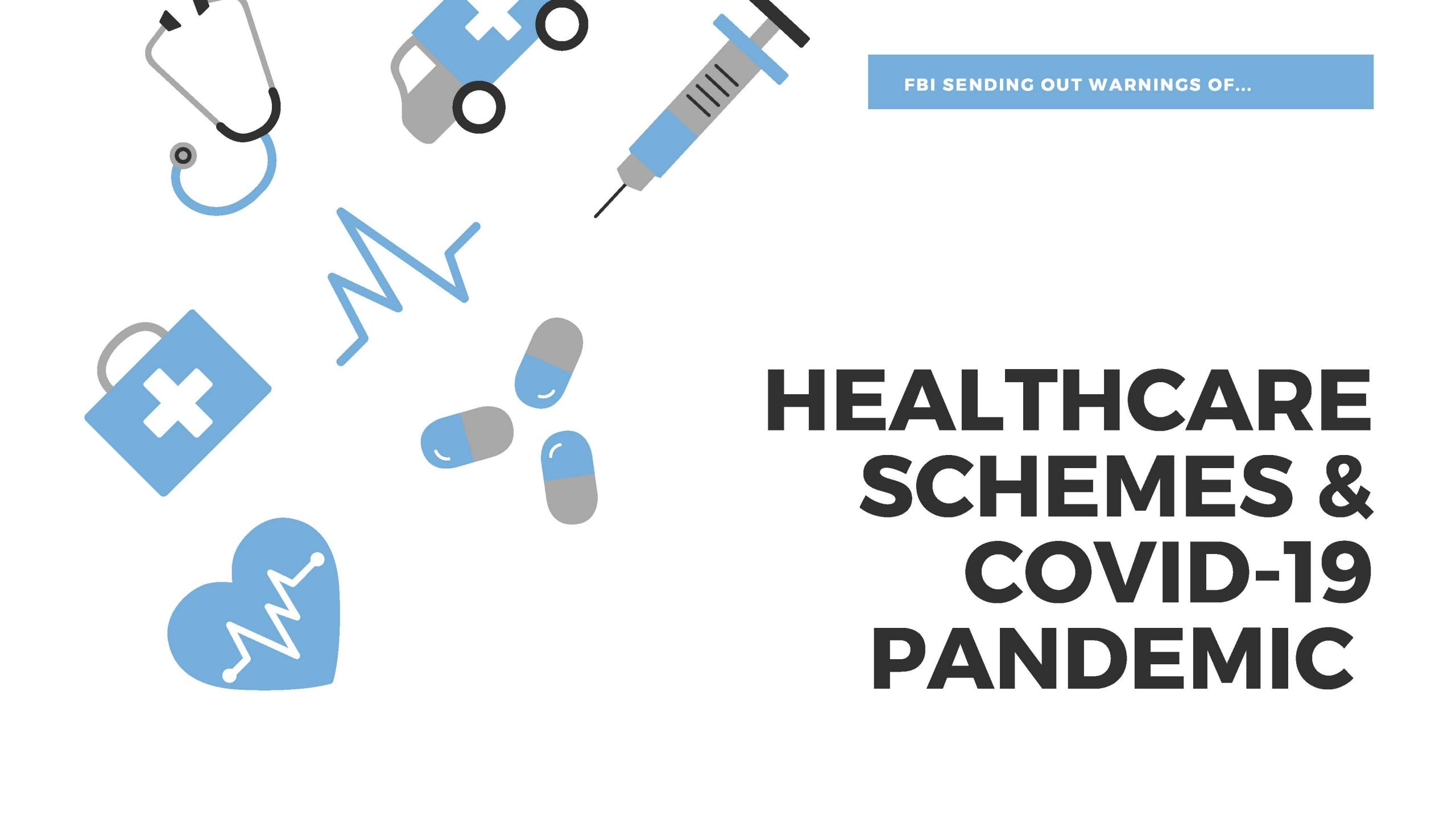
by Brian Thompson | Apr 22, 2020 | General, Identity Theft
The Federal Bureau of Investigation (FBI) sends out warnings of emerging Health Care Schemes related to the COVID-19 Pandemic
The FBI is warning the public about several emerging health care fraud schemes related to the COVID-19 pandemic.
“Criminals are actively manipulating the COVID-19 pandemic to their advantage,” said Calvin A. Shivers, assistant director of the FBI’s Criminal Investigative Division. “We ask all Americans to remain vigilant to avoid falling victim to these schemes.”
Bad actors are selling fake COVID-19 test kits and unapproved treatments through telemarketing calls, social media platforms, and door-to-door visits. Many scammers promise free care to patients in order to gain access to their personal and health insurance information, including their dates of birth, Social Security numbers, and financial data.
The FBI wants the public to be aware of the following schemes:
 COVID-19 Testing Schemes
COVID-19 Testing Schemes
Beware of individuals who contact you in person, by phone, or by email to tell you the government or government officials require you to take a COVID-19 test. These scammers will likely ask for your health insurance information, including your Medicare or Medicaid number, and other personal information. Prior health care fraud investigations have shown that once scammers obtain an individual’s personal information, they use it to bill federal health care programs and/or private health insurance plans for tests and procedures the individual did not receive and pocket the proceeds. Be cautious of any unsolicited offers that require or request your medical insurance information.
Also beware of individuals offering to sell you a COVID-19 test kit or supplies, especially when these contacts are unexpected. A physician or other trusted
health care provider should assess your condition and approve any requests for COVID-19 testing. Some scammers are selling fake at-home test kits; some are even going door-to-door and performing fake tests for money. Legitimate tests are offered free to patients when administered by a health care professional.
 COVID-19 Treatment Schemes
COVID-19 Treatment Schemes
Legitimate medical professionals and scientists throughout the U.S. are working hard to find a cure, approved treatment, and vaccine for COVID-19. Unfortunately, they don’t yet exist. At the same time, scammers are working hard to sell fake cures, treatments, and vaccines. Ignore unsolicited offers for these fake procedures. Do not provide any personal information, including your financial information, Medicare or Medicaid number, or private health insurance information to anyone offering them.
When an approved treatment or cure becomes available, the first time you hear about it will not be through an email, telephone call, online advertisement, or unsolicited in-person sales pitch from a stranger.
You should also beware of scammers claiming to be medical professionals and demanding payment for treating a friend or relative for COVID-19.
If you do receive treatment for COVID-19, be sure to check the medical bills and the explanation of benefits from your provider, government health program, or insurance company. Ensure your medical bills are accurate! If you spot an error, call your medical provider and your insurance company.
The U.S. Department of Health and Human Services, Office of Inspector General issued a
COVID-19 Fraud Alert video to warn about several healthcare fraud scams.
The U.S. Centers for Disease Control and Prevention has posted extensive guidance and information on the Internet that is updated frequently. You may also consult your primary care physician for guidance.
For accurate and up-to-date information about COVID-19, visit:
Related Article: Fraud in the Midst of COVID-19

 Now more than ever, Laptops, Smartphones, Social Media, and advanced schemes have increased the risk for students. Risks that now are more prevalent due to the majority of students studying online remotely, due to the COVID-19 pandemic, creating higher risk. And this May 27, 2020, Federal Trade Commission (FTC) article titled COVID-19 scams targeting college students confirms it.
Now more than ever, Laptops, Smartphones, Social Media, and advanced schemes have increased the risk for students. Risks that now are more prevalent due to the majority of students studying online remotely, due to the COVID-19 pandemic, creating higher risk. And this May 27, 2020, Federal Trade Commission (FTC) article titled COVID-19 scams targeting college students confirms it. 
 Telehealth growth has exploded.
Telehealth growth has exploded.

 Locking your credit accomplishes the same restriction to your credit. But unlocking your credit is very easy and can be done immediately at any time. Unlocking can be done on your computer or your phone. This is beneficial because it is far easier to lock and unlock than it is to freeze and unfreeze. You will pay for the convenience of this service.
Locking your credit accomplishes the same restriction to your credit. But unlocking your credit is very easy and can be done immediately at any time. Unlocking can be done on your computer or your phone. This is beneficial because it is far easier to lock and unlock than it is to freeze and unfreeze. You will pay for the convenience of this service. COVID-19 Testing Schemes
COVID-19 Testing Schemes